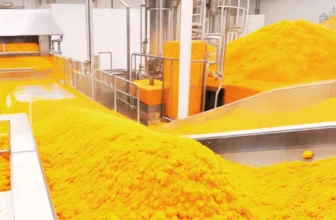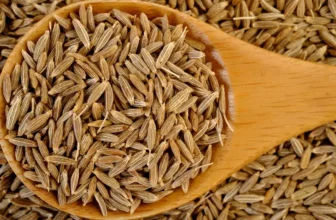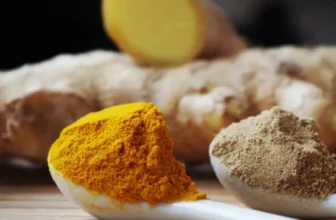Ideal Growing Conditions for Organic Cumin
Growing Conditions Organic Cumin, scientifically known as Cuminum cyminum, is a popular spice used globally for its distinctive flavor and health benefits. Growing Conditions Organic Cumin requires careful attention to sustainable farming practices to ensure a healthy and productive crop. This article explores the ideal conditions and techniques for cultivating organic cumin, emphasizing the importance of soil fertility, water management, and other critical factors.
Table of Contents
Soil Fertility and Preparation
The foundation of successful organic cumin cultivation lies in maintaining soil fertility. Rich, well-drained soils with a balanced pH (between 6.8 and 8.3) are ideal. Soil health can be improved by adding organic manure and natural fertilizers such as compost. Composting provides essential nutrients and enhances the soil structure, promoting better root development.
Soil preparation involves minimally tilling the soil to preserve its structure and beneficial microorganisms, a practice known as minimal tillage. Incorporating cover crops like legumes can fix nitrogen in the soil, further enhancing its fertility.
Seed Quality and Germination
High-quality seeds are crucial for a successful cumin crop. Organic farmers should source seeds from reputable suppliers to ensure they are free from contaminants and genetically modified organisms. Seed quality directly impacts germination rates and overall plant health.
Before planting, it’s beneficial to perform a germination test. Seed spacing is also vital; seeds should be sown 15-20 cm apart to allow adequate space for growth. Proper seedling care includes maintaining optimal moisture levels until the seeds germinate.

Water Management and Irrigation Techniques
Water management is critical in Growing Conditions Organic Cumin cultivation. While cumin is relatively drought-resistant, it requires regular watering, especially during germination and early growth stages. Drip irrigation efficiently provides water directly to the plant roots, reducing wastage and preventing waterlogging.
Irrigation techniques should be tailored to the local climate conditions. In arid regions, conserving water through mulching with organic materials can help retain soil moisture and regulate temperature.
Climate and Sunlight Exposure
Growing Conditions Organic Cumin thrives in warm climates with temperatures ranging between 25°C and 30°C. Adequate sunlight exposure is essential for optimal growth, as cumin plants need full sun to produce high yields. Understanding the local climate conditions and selecting the appropriate growing season is crucial.
Pest and Weed Management
Organic farming relies on natural methods for pest control. Introducing beneficial insects, such as ladybugs and predatory wasps, can help manage pests naturally. Using natural pesticides like neem oil and garlic sprays can also be effective.
Weed management is another critical aspect. Weeds compete with cumin plants for nutrients and water. Techniques such as companion planting and mulching can suppress weed growth naturally.
Sustainable Agricultural Practices
Adopting sustainable agricultural practices ensures the long-term health of the farm ecosystem. Crop rotation is a critical practice involving growing different crops on the same land to prevent soil depletion and reduce pest and disease cycles.
Biodiversity in the farm ecosystem can be enhanced by incorporating a variety of plants, which supports beneficial insects and improves overall plant health.

Harvesting and Post-Harvest Care
Timing the harvest is crucial for maximizing the quality and quantity of cumin seeds. Harvesting should occur when the seeds are fully mature and have turned brown. Proper harvest timing ensures the seeds have the highest oil content and flavor.
Post-harvest care involves drying the seeds thoroughly to prevent mold and fungal infections. Post-harvest care also includes cleaning and storing the seeds in a cool, dry place to maintain their quality until they are ready for use or sale.
Organic Certification
Obtaining organic certification is essential for marketing the cumin as organic. The certification process involves adhering to specific standards and practices, ensuring that no synthetic chemicals or genetically modified organisms are used throughout the cultivation process.
Yield Optimization
Optimizing the yield involves a combination of all the factors mentioned above. Proper crop management practices, including regular monitoring and adjusting farming techniques as needed, can lead to higher productivity and better-quality cumin seeds.
Related post:
Organic vs Non-Organic Cumin: Making an Informed Choice
Conclusion
Growing conditions organic black and white cumin requires a holistic approach that integrates sustainable farming practices, soil fertility management, efficient water management, and natural pest and weed control. Farmers can produce high-quality organic cumin that meets the increasing demand for organic spices by focusing on these aspects Growing Conditions Organic Cumin.
Incorporating agroecology principles and embracing organic practices benefits the environment and ensures consumers’ health and well-being. With the proper knowledge and techniques, cultivating organic cumin can be a rewarding and sustainable venture.
Other Quality Products
-
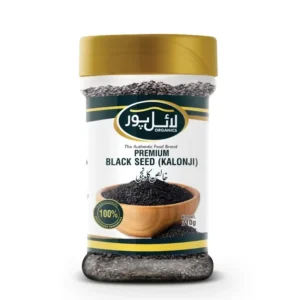 Premium Black Seed – Kalonji (Khalis Kalwanji) – 100% Natural & Pure | Nutrient-Rich & Flavorful | Best Price in Pakistan₨ 277.00 – ₨ 640.00Price range: ₨ 277.00 through ₨ 640.00
Premium Black Seed – Kalonji (Khalis Kalwanji) – 100% Natural & Pure | Nutrient-Rich & Flavorful | Best Price in Pakistan₨ 277.00 – ₨ 640.00Price range: ₨ 277.00 through ₨ 640.00 -
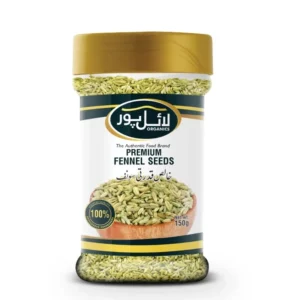 Premium Fennel Seeds (Saunf) – 100% Natural Organic & Pure | Rich in Flavor & Aroma | Best Price in Pakistan₨ 233.00 – ₨ 490.00Price range: ₨ 233.00 through ₨ 490.00
Premium Fennel Seeds (Saunf) – 100% Natural Organic & Pure | Rich in Flavor & Aroma | Best Price in Pakistan₨ 233.00 – ₨ 490.00Price range: ₨ 233.00 through ₨ 490.00 -
 Premium Crushed Red Chili (Crushed Lal Mirch, Darra Mirch) – 100% Natural & Pure | Super Spicy Flavour & Vibrant Color | Best Price in Pakistan₨ 219.00 – ₨ 780.00Price range: ₨ 219.00 through ₨ 780.00★★★★★
Premium Crushed Red Chili (Crushed Lal Mirch, Darra Mirch) – 100% Natural & Pure | Super Spicy Flavour & Vibrant Color | Best Price in Pakistan₨ 219.00 – ₨ 780.00Price range: ₨ 219.00 through ₨ 780.00★★★★★ -
 Premium Kishmish (Raisin) Sundarkhani – 100% Natural Organic & Pure | Rich in Nutrients & Sweet Flavour | Best Price in Pakistan₨ 281.00 – ₨ 410.00Price range: ₨ 281.00 through ₨ 410.00
Premium Kishmish (Raisin) Sundarkhani – 100% Natural Organic & Pure | Rich in Nutrients & Sweet Flavour | Best Price in Pakistan₨ 281.00 – ₨ 410.00Price range: ₨ 281.00 through ₨ 410.00 -
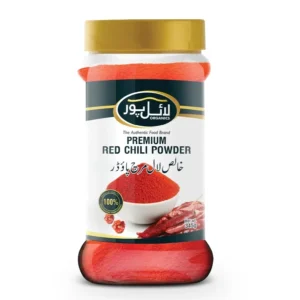 Premium Red Chili Powder (Lal Mirch Powder) – 100% Natural & Pure | Hot Spicy Flavour & Vibrant Color | Best Price in Pakistan₨ 200.00 – ₨ 1,015.00Price range: ₨ 200.00 through ₨ 1,015.00
Premium Red Chili Powder (Lal Mirch Powder) – 100% Natural & Pure | Hot Spicy Flavour & Vibrant Color | Best Price in Pakistan₨ 200.00 – ₨ 1,015.00Price range: ₨ 200.00 through ₨ 1,015.00 -
 Premium Black Pepper Powder (Kali Mirch Powder) – 100% Natural & Pure | Bold Flavour & Rich Aroma | Best Price in Pakistan₨ 664.00
Premium Black Pepper Powder (Kali Mirch Powder) – 100% Natural & Pure | Bold Flavour & Rich Aroma | Best Price in Pakistan₨ 664.00




